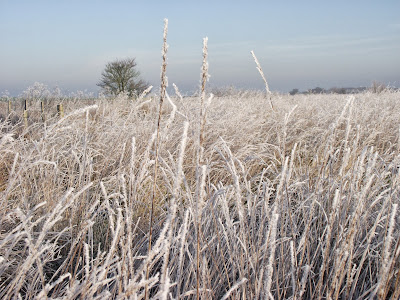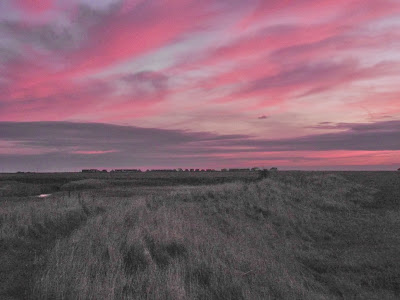Of course, none of this comes as a new revelation to people used to woods all the year round but as someone who has spent a lifetime in the wide open spaces of Sheppey's marshes it's all quite fascinating to me. The bracken and other undergrowth had all died away to leave just naked tree trunks and the well trodden paths that I normally followed through the undergrowth had now disappeared against the bare woodland floor where humps and hollows that I didn't know existed had become exposed. All those places where just a few months ago I was trying to identify woodland fungi were now covered in a deep layer of leaf litter, and the ever-present Robin song now echoed through the trees rather than being muffled by the overhead canopy. It was all so reminiscent of that passage in the Wind in the Willows when the Mole made off to the Wild Wood one winter's day -
"the country lay bare and entirely leafless around him, and he thought that he had never seen so far and intimately into the inside of things as on that winter day when Nature was deep in her annual slumber and seemed to have kicked the clothes off. Copses, dells, quarries and all hidden places, which had been the mysterious mines for exploration in leafy summer, now exposed themselves and their secrets pathetically............"
It all makes winter sound terribly romantic and yet me, I prefer the memories of high summer in the woods - stepping out from the shade of the pine trees into pools of hot sunshine, the sweet scent of the gorse in flower, the buzz of bees in early heather flowers - long, hot summer days and arthritic bones make perfect bedfellows, not so short, dark and cold winter days.
Back on the reserve on Sheppey the only marked variations that we tend to get throughout the year are the fact that it is either very dry or very wet and at the moment, as the photos below show, we are now entering our very wet phase. I took these at dawn on Boxing Day and since then the water has continued to rise as the water drains out of the higher farmland alongside. Clearly we are going to experience our normal winter flooding and will now see the hoped for upsurge in wildfowl and waders. Signs of this were evident on Boxing Day as a few more Teal, Mallard and even a pair of Pintail sprang up from various flooded areas, unfortunately one of the Pintail was immediately despatched by a waiting wildfowler, which I could of done without. But once large areas of the grassland become flooded it tends to float up the various weed and sedge seeds that are laying around, making them easily available to the ducks to find and eat. This can then have the effect of limiting the attraction of the farmland corn fed shooting ponds for the ducks and therefore reducing the opportunities for them to be shot, hopefully.
These twice yearly weather effects always seem to be so pronounced and typical on the North Kent marshes, this year the reserve was around 40% flooded until well into the early summer and then we had around three months of fairly hot and rain-free weather which brought about large cracks in the ground. It was almost as if the snow, the rain and the cold Spring had never happened as rain spent months going round Sheppey, rather than actually over it, the sun became more constant, butterflies flourished, and yet now, here we are, back with an excess of water!
months weather.

















































